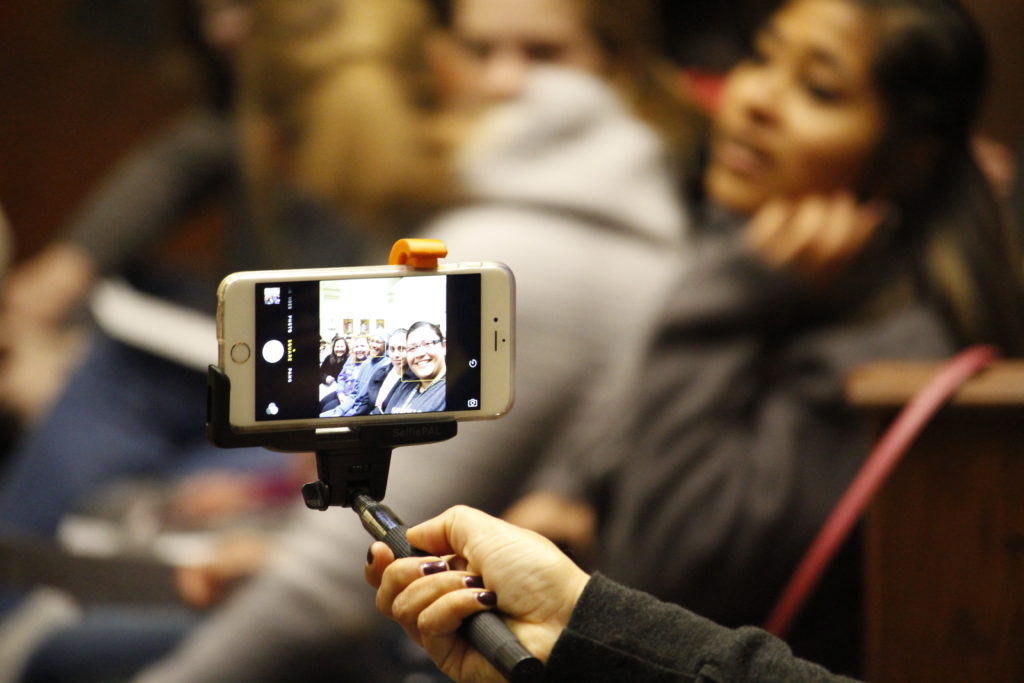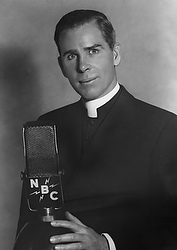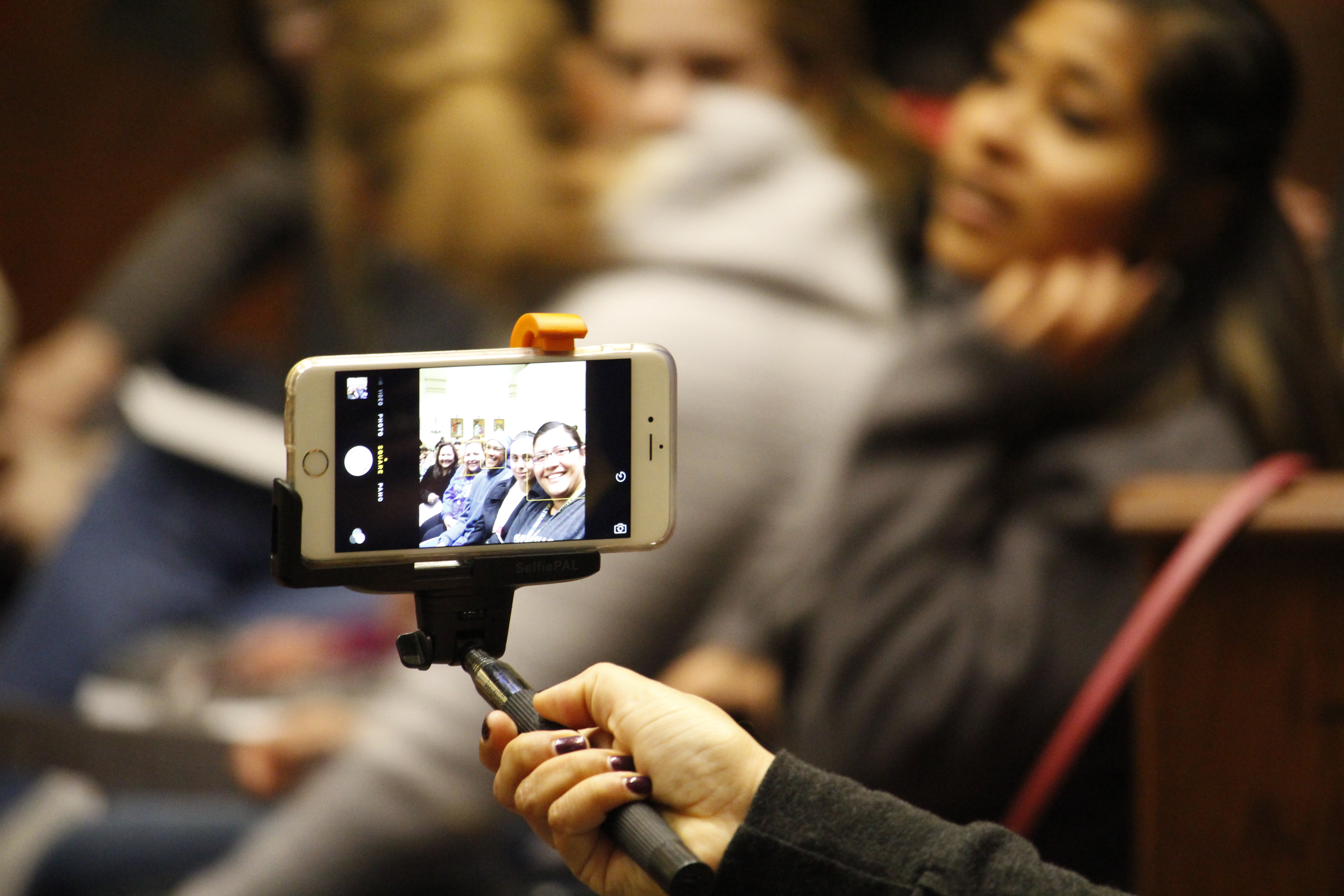
WASHINGTON (CNS) — Laypeople are meant to be “out on the frontlines” of using media in the new evangelization, said a speaker at an April 13 panel discussion at The Catholic University of America in Washington.
The panel consisted of leaders in Catholic broadcasting and communications and was held in honor of the 75th anniversary of Archbishop Fulton Sheen’s first televised service on Easter of 1930.
It was part of a weeklong celebration of the legacy of the 20th-century Catholic evangelist.
Speakers on the panel titled “Media and the New Evangelization” included Fr. Robert Reed, president of the CatholicTV Network of the Boston Archdiocese; Basilian Father Thomas Rosica, founding CEO of Canada’s Salt and Light Catholic Media Foundation; and Michael Warsaw, CEO of the Eternal Word Television Network.
Following a short video on the life of Archbishop Sheen, the panel discussed how his example can be used in current efforts to spread the Gospel through broadcast and social media.

“He was America’s priest,” said Fr. Reed in discussing the popularity of the archbishop’s prime-time weekly television show, “Life is Worth Living,” adding that while the means of broadcast have changed in scope and nature, “the (evangelical) mission is identical,” even in a world that is “moment-centric and spiritually famished.”
Fr. Rosica said that he takes away two important lessons from the life and example of Archbishop Sheen.
“The first is that faith cannot be relegated” to private sanctuaries, but that it “can only develop in the public square.” The second lesson, according to Fr. Rosica, is that “when faith becomes ideology, it loses its identity,” which he said should remind the faithful how to spread the Gospel to others.
Fr. Rosica went on to say that one of the greatest challenges for the new evangelization in a world of ever-changing media is to “tell the ancient story in fresh, new and exciting ways.”
When asked whether the Catholic Church had fallen behind other denominations in media utilization in recent years, especially in the age of social media, the speakers emphasized the importance of embracing these means as a new method for creatively sharing the church’s message.
“The challenge is to be creative with new media,” said Fr. Reed, whose network now features a game show, “WOW: The Catholic TV Challenge,” and a reality show, “House+Home,” both of which he hosts.
Because of the many forms of new media, Fr. Rosica said, “we have to operate on many platforms at the same time.”
However, Warsaw warned that while social media, blogs and other forms of new media are quite popular with younger demographics, “you don’t throw the baby out with the bathwater,” explaining that linear television is still an invaluable tool in spreading the message because of its ongoing pervasiveness in the American household and American life in general.
Fr. Rosica concurred, saying that “5 million tweets mean nothing” unless those sending the message find a way to adequately convey “the embrace of Christ.”

To this point, Warsaw added that, regardless of the means in which the message is sent, those engaged in evangelism through media must remember to craft messages that emphasize and embrace “beauty, truth and goodness,” so that the “authoritative message of truth” will attract others to the Catholic Church.
Warsaw also pointed out that the mission for Catholic broadcasters and evangelists is different than that of some other denominations.
Whereas some evangelists of other denominations use media as an “alternative to interacting with a local church,” Warsaw reminded the audience that “we are a sacramental church. … Everything needs to be focused on bringing people into the local church.”
When the panel was asked on how Archbishop Sheen would have adapted to the age of social media, Fr. Rosica focused more on his actual legacy than speculations about what he would post.
Because of the archbishop, Catholics were not afraid to share their faith publicly but “after a few decades, several have gone back in the closet,” said Fr. Rosica, adding that he hopes for a renewal that will have the same effect. “But I don’t think (Sheen) would be caught up with tweets,” he added.
When an audience member asked about the need for Catholic media to “lead to something beyond itself,” Fr. Rosica replied that the goal of evangelical media “is to lead people to something more beautiful” than the medium itself.”
In closing, the panel discussed the role of laity in the new evangelism. All concurred that laypeople have a role to play in spreading the Gospel across all forms of media.
Evangelism, especially in media “needs to be the work of the laity,” said Warsaw in his final statement, “not just the clergy.”
While there “should still be a presence” of the clergy in production, said Fr. Rosica, laity should be “out on the front lines” of the New Evangelism.
According the U.S. Conference of Catholic Bishops’ website, “the focus of the new evangelization calls all Catholics to be evangelized and then to go forth and evangelize. In a special way, the new evangelization is focused on ‘re-proposing’ the Gospel to those who have experienced a crisis of faith.”
— By Nate Madden, Catholic News Service.







